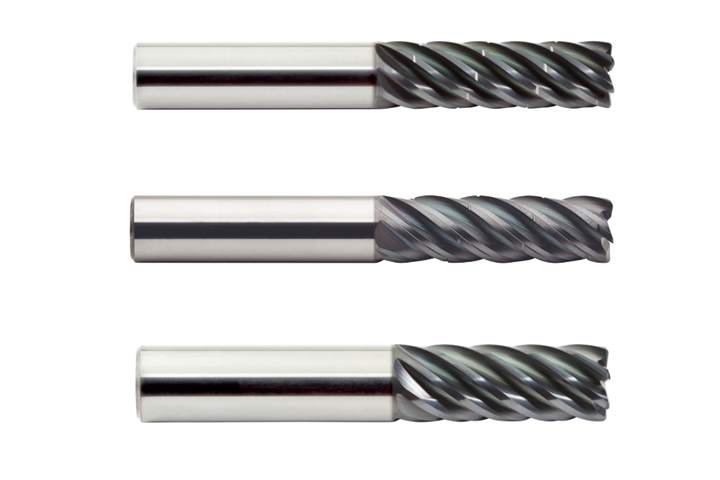End Mill Series Design Enables Dynamic Milling Strategies
M.A. Ford’s TuffCut XV series of XV5CB, XV7 and XV7CB end mills get the job done when it comes to improving speeds and feeds, wear and surface finish, in addition to standing up to difficult-to-machine materials.
Proper cutting tool selection for moldmaking, such as the M.A. Ford TuffCut XV series XV5CB, XV7 and XV7CB end mills, get the job done when it comes to improving speeds and feeds, wear and surface finish, in addition to standing up to difficult-to-machine materials like alloyed steels.
The company’s XV5CB five-flute end mill is designed to deliver exceptional metal removal on steels and stainless steels with up to 4×D axial engagement. Using ALtima Q coating, staggered chipbreakers and open end geometry for aggressive engagement, it is ideally suited to dynamic milling strategies.
Available in diameters from 3/8" to 3/4", the XV5CB’s combined variable pitch geometry flutes and thick core are said to minimize harmonic vibration and increase strength. Productivity is increased via the tool’s aggressive stepover capabilities while maintaining a stable and reliable process.
The TuffCut XV7 series end mill shares some of the same features as the XV5CB such as the staggered chipbreakers, Altima Q coating and thick core design. In addition, the XV7/XV7CB was developed for dynamic milling strategies in tough-to-machine materials. This cutting tool uses M.A. Ford’s variable pitch, center-cutting geometry to deliver optimal metal removal rates. It’s 180-series geometry, along with some distinctive enhancements, enables for more efficient ramping and enhanced floor finishes.
Available in 1×D up to 4×D flute length options, the thick core design helps maintain rigidity during high axial engagement machining.
Ultimately, the TuffCut XV series, with a thick core design and increased axial cutting, makes them reliable tools that can be used across many industries.
Related Content
-
The Benefits of Hand Scraping
Accuracy and flatness are two benefits of hand scraping that help improve machine loop stiffness, workpiece surface finish and component geometry.
-
Machining Center Spindles: What You Need to Know
Why and how to research spindle technology before purchasing a machining center.
-
Fundamentals of Designing the Optimal Cooling System
The right mold components can help improve mold cooling and thereby produce higher-quality parts.









.png;maxWidth=300;quality=90)






.png;maxWidth=970;quality=90)